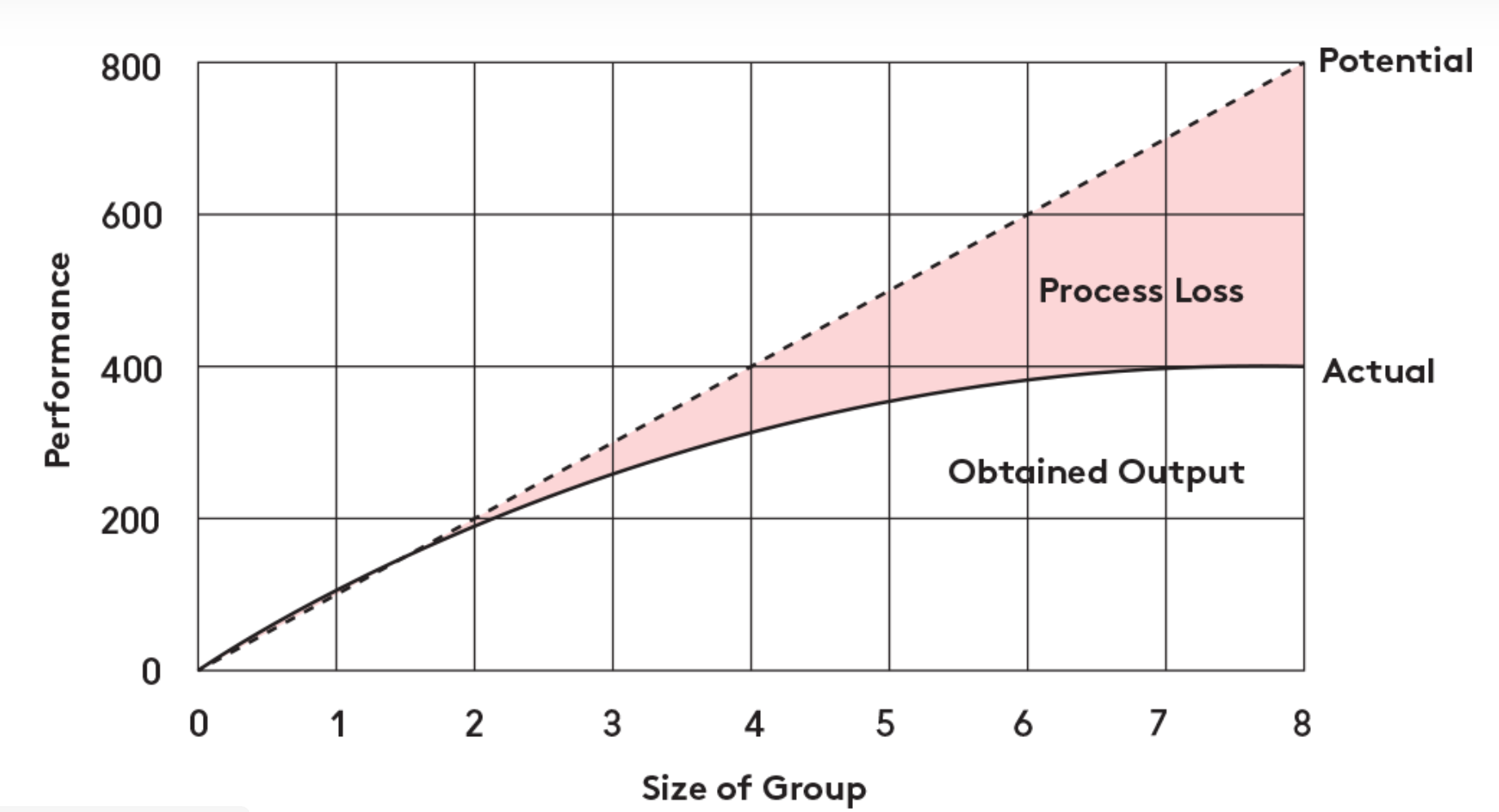How Hard Are You Pulling the Rope?
Is your team – agency, charity, agency + charity – the right size? Bigger isn’t better.
There’s a strong tendency for individual members of a group to become increasingly less productive as the size of their group increases.
This phenomenon occurs in rope pulling and the workplace, it’s called the Ringlemann effect.
Ringlemann measured the pull force of each person pulling a rope by themselves and then continually measured as more people were added. As the number of people pulling the rope increased, the total force being generated continued to rise. However, the average pull force of each individual diminished and continued to fall.

In the workplace this decrease in effectiveness and productivity as the team gets bigger happens because the number of communication links increases exponentially.
How do you determine the number of communication links?
n(n-1)/2 where n is the number of team members
- A team of 7 has 21 communication links
- That jumps to 66 links for a group of 12 and so on…
As the number of communication links increases so does the likelihood for,
- miscommunication
- under or over communication on any given link
- delays
- human error
- feeling like you’re receiving less support and team bonding
Research suggests the ideal team size is 4.6 and yes, the absurdity of the fraction is not lost on me.
More likely, it’s a range of 4-7. And yes, a successful or productive team is not merely a function of size. The task at hand and required skill sets to deliver is the critical starting point.
But the idea that the agency trotting in the largest team is the one with the best ideas, service and efficiency is not only off the mark but possibly 180 degrees so.
Kevin



I’m picturing Gen. Eisenhower planning for the invasion of Normandy and deciding that, because the ideal team size is 4-7 people, sending six guys.
Some jobs require more people.
There’s a difference between the ideal size of a workgroup and the ideal size of the overall team. To steal from Gen. McChrystal, you want a team of teams, with the network size scaled to your ambitions.
In other words, 4-7 people is ideal… if you only have one rope to pull.
Nick, yes, of course. All uber efforts can and will be broken down into projects and sub-projects and tasks and therefore, teams.
We have many problems in the sector, one is believing that a team of 20 is better than a team of 10 or 5 as a fundraising core unit because of the number. As I noted in the post, step one is assembling subject matter experts for the work at hand. Show me a team of 5 built this way and I’ll bet them against the team of 20 or 50 assembled by ‘channel’, seniority (title) and non-experts (is creative a person? and what skill set does the writer have?) any day.
The Skunkworks team was tiny and very purposefully assembled and they did what the entirety of Lockheed thought impossible.
I’ll take the bet. The Skunkworks team is a great example. At its beginning, it was 54 people: its leader, 23 designers and engineers, and 30 mechanics.
Give me the 25 people assembled as five teams of five over the team of five. And give me the 125 people assembled as five teams of five teams of five over that team of 25. It takes organizational skill, but Archimedes was right that the length of your lever is proportional to how much you can move the world.
And to go one further, there is such a thing as channel expertise: someone who is skilled at buying outdoor media will not have all their skills translate to buying connected TV, as they are different types of audiences (addressable versus non-addressable). There is such a thing as writing expertise, as you can tell by reading the writing of someone who hasn’t developed it. There is such a thing as design expertise, as you can tell by looking at anything I designed myself.
i hope we’re not equating a team building a jet fighter to a fundraising team in scope, complexity and therefore, desired or worse, necessary size.
Writing expertise for sure but why the “digital writer” for email and ads vs. the paper writer? And writing expertise shouldn’t be subjective, Lake Wobegon this ain’t and the average fundraising copy reads like an academic abstract so picking and evaluating those team members probably could use some work too.
Nope, not equating fundraising to making a jet. As I said originally, some jobs require more people. And fundraising may be less complex than jet creation but is more complex than rope pulling.
As for not needing different writing styles, I’ll be on the lookout for that 2-4-page banner ad with a Johnson box. 🙂